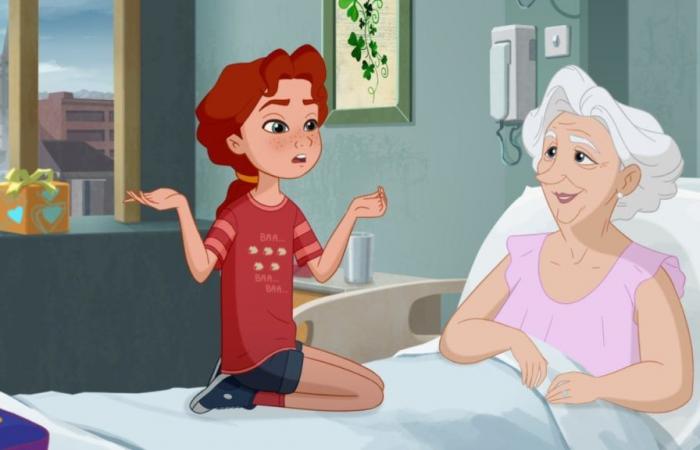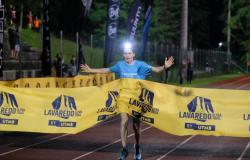A moment dedicated to animation, with the triumph in theaters of Inside Out 2 and the Pesaro New Cinema Festival which dedicated an evening to Enzo D’Alò and that genre that is so loved and undervalued. We met Enzo D’Alò.
Will animation be the right cinematic counter-programming for this summer of European football championships, while waiting for the Olympics? Judging by Inside Out 2 and his saviors six million euros collected in three days, the answer seems to be a clear yes. Then there is another confirmation, more underground, that of Enzo D’Alò, which travels around Italy to capture outdoor audiences on the evenings when Italy plays. He did it on June 14th, with the Cinema in Piazza in Rome, in San Cosimato, and confirmed it yesterday in a evening of the Pesaro New Cinema Exhibition. He presented his latest film, Mary and the Midnight Spiritwhich we talked about elsewhere in detail, which he accompanied in Piazza del Popolo together with a special backstage of the film.
Four generations of women accompany the growth path of eleven-year-old Mary, between mourning and self-awareness, in a story taken from Roddy Doyle’s autobiographical novel, The Midnight Trip, published by Guanda.
D’Alò says he is happy that it is an animated film that is reviving the box office, hopefully giving a turning point to the summer in cinemas, even if he traces the result “to the Disney formula, to the positive loyalty building ability” of that logo, beyond the specificity of Pixar. “There is an imagination behind it and we cannot underestimate it“, He told us. “When I was young, Disney had a monopoly on animation for decades, constant presence in the market is crucial, people quickly forget. I start from scratch every time with each new film. For Americans, imagery is crucial, like when they take any bottle of Chianti coming to Italy, perhaps a mediocre one, and bring it home to represent the imagery of Tuscany. They are not interested in good wine, but in showing that they have been there.”
Enzo d’Alò he talked about how inevitably “you put yourself in every film and it may happen that we return to topics already addressed in other projectsas is the case with mourning in Mary and the Midnight Spirit but also not The gabbanella and the cat. Detachment and loss are among the themes, but not the most important. It is always at the center of questions from journalists and from the public perhaps because they refer to taboos. I talk about the hope associated with loss rather than the melancholy or crying and fear of what will happen after death. I don’t want to give answers, but I believe that something of each of us remains. What you leave on earth are the values you transmit”.
What is the difference between cinema for adults and for children, “often far ahead of us adults”? D’Alò does not miss the possibility of relativizing this useless distinction, recalling then that the music in his films is always authorial and never traditionally intended as being for children. Just think about the collaborations in the past with Paolo Conte, Pino Daniele, Gianna Nannini, Luis Bacalov and David Rhodes for the latter film, but also for The Gabbanella and the Cat, Peter Gabriel’s historic guitarist. Speaking of music, he remembers that he started out as a musician, and how it is a fundamental instrument for him. “I like to work and chisel together with the author of the soundtrack, in order to underline what happens each time in the film. I give the author the script and almost immediately I need his contribution, even temporary, to describe certain sequences.”
Imbued with Irish culture, Mary and the Midnight Spirit was born with the same serene relationship, and certainly not from a horror film, that the inhabitants of the island have with ghosts. “They are a family presence, people to chat with without worrying that they are immaterial,” said D’Alò, who has almost always relied on literary works for his films, and confirms himself as a strong reader for the pleasure of doing so, even if, like everyone else, “I build a film in my head about what I read. Each reader is the director of his own film, it is a very important mental process. The inspiration then follows my way of seeing the world, and we must be the ones who are moved and entertained first and foremost, I always say this to my collaborators, otherwise how will the spectators be able to do it?”
He has loved German cinema, above all Wenders, since he was young, and thanks Japanese animation for breaking the distinction between adult and child audiences in the genre. “We Europeans are further behind, especially in Italy, although I would talk about technique and cinema, not genre, when talking about animation. Me I feel close to Asian authors, who have gone beyond the limits of the mainstream, bringing laughter and entertainment, always passing through a disturbing story about the social relationships of their community. We too in Europe, in our own small way, are following this path. Although our ministry’s announcements are made with incompetence, I don’t think bad faith, and they don’t help animation. I hope something changes soon, to help this technique that is so loved in our area too.”






